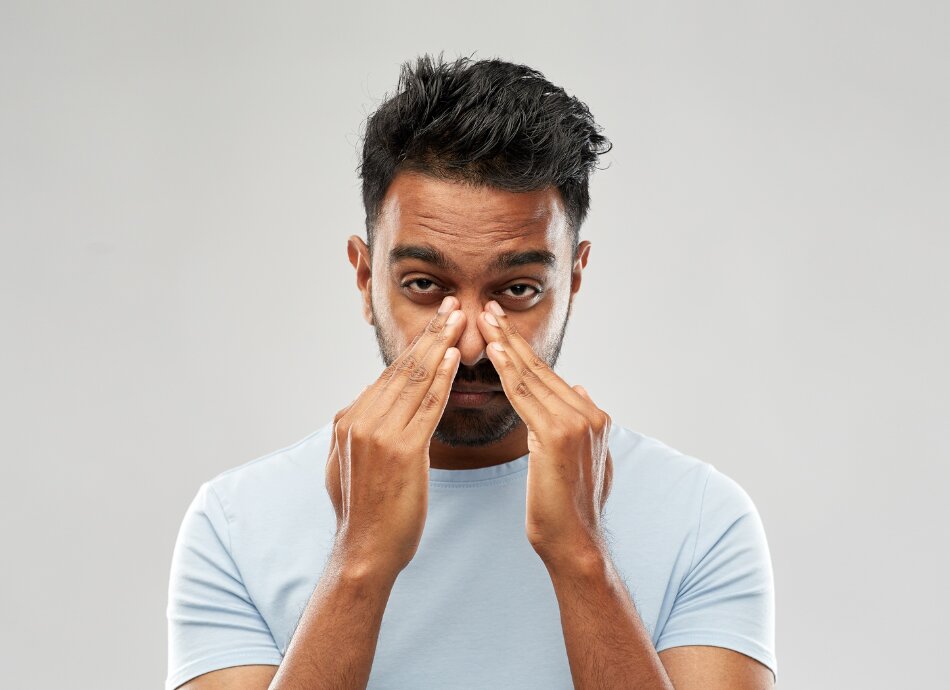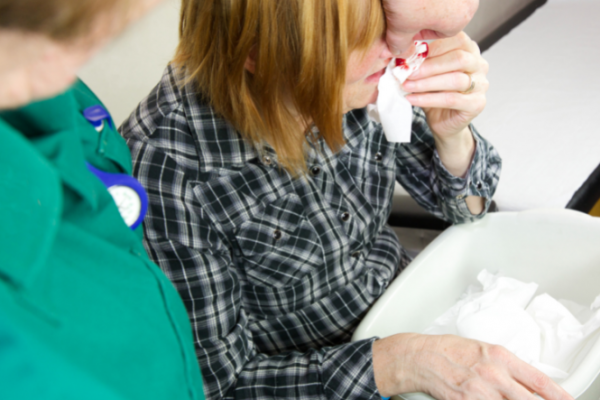Wishing everyone a safe and happy Christmas and New Year – Meri Kirihimete from the Healthify team.
Broken nose
Key points about broken nose
- A broken nose (also called a fractured nose) is a common injury after a knock to your face.
- Broken noses are usually swollen, red and sore. You may also have bruising, a bleeding nose or feel a crunching when you move your nose.
- Your nose might look bent, or you might find it hard to breathe through your nose.
- A knock to your head or face can also cause more serious injuries.

A broken nose, also called a fractured nose, is a common injury after a knock to your face.
Broken noses are usually swollen, red and sore. You may also have bruising, bleeding from your nose or feel a crunching sensation when you move your nose.
If you have a broken nose, your nose might look bent or you might find it hard to breathe through your nose.
A knock to your head or face can also cause more serious injuries
Seek emergency help if:
- clear fluid is trickling from your nose (call 111 for an ambulance as you may have a serious head injury).
- you have a severe headache, neck pain or a stiff neck. This is especially important if you have numb or tingling arms, blurred or double vision or other symptoms of a severe head injury, eg, loss of consciousness or repeated vomiting.
You should see a healthcare provider quickly if you have:
- a nosebleed that won't stop
- a cut or graze over your nose
- a blood clot or swelling inside your nose between your nostrils. This may be a septal haematoma, which needs to be drained straight away.

Image credit: Canva
A health professional will usually be able to tell your nose is broken from the way it looks.
You probably won't need an X-ray of your broken nose unless your healthcare provider thinks another bone in your face is broken.
Most broken noses can be managed at home. To reduce swelling, hold an ice pack against your nose for 15 minutes, once an hour for the first few days. Make sure there is a cloth between the ice and your skin, so you don't damage your skin.
The swelling will usually go down after a week, and the bruising will go in about 2 weeks.
You should see your general practice team if:
- the pain gets worse, or does not get better with simple pain relief like paracetamol
- the swelling has gone down, but you still find it hard to breathe through your nose
- your nose looks crooked
- the swelling hasn't gone down after a few days
- you have nosebleeds that keep coming and going
- you have a high temperature.
If your nose is severely broken, you may need to get it straightened (realigned) by an otolaryngologist. Otolaryngologists were previously called ear, nose, and throat (ENT) specialists. It's best to do this within 2 weeks of the injury. You might need to wait till there is less swelling before your healthcare provider can decide if your nose needs to be straightened.
You'll usually be given a local anaesthetic that can numb your nose for 2 to 4 hours before straightening. If you're unhappy with either how you're breathing or the shape of your nose, ACC might cover the cost of private surgery. Talk to your healthcare provider about this.
When you have your broken nose straightened, you'll have a local anaesthetic, which numbs your nose for 2 to 4 hours.
Afterwards, it's best to get someone to drive you home – or to wait 2 hours before you drive.
When you're home:
- Take 2 paracetamol tablets (Panadol or Paracare), or paracetamol with codeine (Panadeine) every 4 hours to control the pain. Don't take any more than 8 tablets in one day.
- Don't drink alcohol or take any recreational drugs for 24 hours, as these may react badly with the local anaesthetic
- Rest for the next 24 hours. Don't try any heavy lifting or hard physical work for the next 2 days.
If the pain continues, or if you become hot and feverish with a nasty green nose discharge, get in touch with your healthcare provider or call Healthline on 0800 611 116.
Over the next few days you should:
- Be careful at times when you may bump your nose, eg, when you have small children or animals on your knee, or when you're in bed at night.
- Just dab your nose gently – don't wipe it vigorously or blow it hard.
- Keep your mouth open if you sneeze.
- Keep any plaster on your nose dry and stay out of the sun to avoid overheating. Try to keep the plaster in place for at least one week.
- If crusts form inside your nose, gently sniff warm, salty water from your cupped hand to soften them. Don't pick your nose.
You should also avoid contact sport for the next 4 weeks as your nose heals.
Credits: Content shared between HealthInfo Canterbury, KidsHealth and Healthify He Puna Waiora as part of a National Health Content Hub Collaborative.
Last reviewed:





